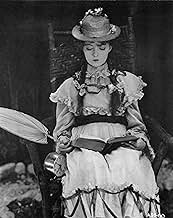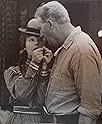"A Romance of Happy Valley" is a good smaller production from D.W. Griffith. It's very similar to and somewhat lesser than his later film also of the same year, "True Heart Susie". Both pictures star Lillian Gish and Robert Harron as lovers estranged for considerable length and are coming-of-age melodramas set in America's rural South. I'm not positive, but the same sets may have been used in both films; regardless, the locations are similar looking.
As in the later film, Gish plays a naïve, long-suffering country girl who awaits Harron's return from making good in the city. The narrative here isn't as well developed as that for "True Heart Susie" and, perhaps, one can view "A Romance of Happy Valley" as a bit of a trial run for the later film. The frog toy invention Harron makes good with seems as though it must be a joke I'm not getting. And, the contrived ending reused from Griffith's short film "The Son's Return" (1909) and the Judas character were unnecessary and irrelevant to the main story. A more abrupt reunion finale without the cheap surprise gimmicks would have been preferred.
Nevertheless, I like the film for its nice photography and good scene dissection between the picturesque countryside and closer views of the characters. The beauty of Bitzer's cinematography isn't as evident in the somewhat worn out print for this film as it is in the recent Film Preservation Associates restoration of "True Heart Susie" and in some of Griffith's other more prominent releases, but since "A Romance of Happy Valley" was considered lost until a print was discovered in a Soviet archive in 1971, we should, I suppose, consider ourselves fortunate. Additionally, arguably the best part of this picture, as was often the case in her films, is Lillian Gish's performance. She really makes her character appear featherbrained in this one, with her nervous skipping and wide-eyed look. The scene where she jerks her head right and left causing her hat to flip sides each time with her while she argues her need for more fashionable clothes to her father was especially amusing. And, her scenes with Harron's coat on a scarecrow rack, as a substitute for her estranged lover, are pitiful and poignant. (EDIT: It's interesting how similar this scene is to the one in "The Artist" (2011); I wonder if that's intentionally so.)































